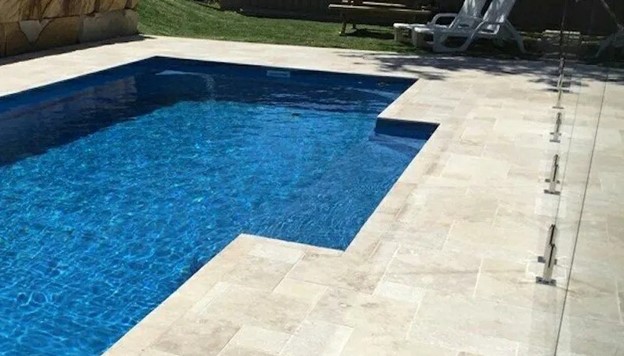Xeriscaping: Drought-Tolerant Landscaping for Water Conservation
Xeriscaping is a landscaping technique that focuses on creating beautiful and functional outdoor spaces while minimizing water usage. It is specifically designed for areas prone to drought or limited water availability. By incorporating drought-tolerant plants, efficient irrigation systems, and water-saving practices, xeriscaping aims to conserve water and reduce the need for excessive maintenance. This approach not only helps to preserve water resources but also promotes sustainable and environmentally-friendly landscaping practices.
Benefits of Xeriscaping: Saving Water and Preserving the Environment
Xeriscaping: Drought-Tolerant Landscaping for Water Conservation
Benefits of Xeriscaping: Saving Water and Preserving the Environment
Xeriscaping is a landscaping technique that has gained popularity in recent years due to its numerous benefits. By using drought-tolerant plants and minimizing water usage, xeriscaping not only helps save water but also preserves the environment. In this article, we will explore the various advantages of xeriscaping and how it contributes to water conservation.
One of the primary benefits of xeriscaping is its ability to save water. Traditional landscaping often requires a significant amount of water to maintain lush lawns and gardens. However, xeriscaping focuses on using plants that are adapted to arid conditions, reducing the need for excessive watering. By choosing native plants and incorporating efficient irrigation systems, homeowners can significantly reduce their water consumption.
Moreover, xeriscaping helps to preserve the environment by reducing the strain on local water resources. In many regions, water scarcity is a pressing issue, and excessive water usage for landscaping purposes only exacerbates the problem. Xeriscaping promotes responsible water usage by utilizing plants that require minimal irrigation. This not only conserves water but also helps to maintain the ecological balance of the surrounding area.
Another advantage of xeriscaping is its low maintenance requirements. Traditional landscaping often demands regular mowing, fertilizing, and pest control, which can be time-consuming and costly. In contrast, xeriscaping focuses on selecting plants that are well-suited to the local climate and soil conditions, reducing the need for excessive maintenance. This not only saves homeowners time and money but also reduces the use of harmful chemicals that can harm the environment.
Furthermore, xeriscaping can enhance the aesthetic appeal of a property. Many people mistakenly believe that xeriscaping results in a barren and unattractive landscape. However, with careful planning and selection of plants, xeriscaped gardens can be just as visually appealing as traditional landscapes. By incorporating a variety of drought-tolerant plants, rocks, and mulch, homeowners can create a beautiful and sustainable outdoor space that requires minimal water and maintenance.
In addition to its immediate benefits, xeriscaping also contributes to long-term environmental sustainability. By reducing water consumption and minimizing the use of harmful chemicals, xeriscaping helps to protect local ecosystems and wildlife. It also reduces the carbon footprint associated with traditional landscaping practices, such as the use of gas-powered lawnmowers and excessive water pumping. By adopting xeriscaping techniques, homeowners can play a significant role in mitigating the effects of climate change and promoting a more sustainable future.
In conclusion, xeriscaping offers numerous benefits, including water conservation and environmental preservation. By using drought-tolerant plants, minimizing water usage, and reducing maintenance requirements, xeriscaping not only saves water but also contributes to the overall health of the environment. With its aesthetic appeal and long-term sustainability, xeriscaping is a landscaping technique that homeowners should consider to create beautiful and eco-friendly outdoor spaces.
Xeriscaping Techniques: Designing a Beautiful and Sustainable Landscape
Xeriscaping is a landscaping technique that focuses on creating beautiful and sustainable landscapes while conserving water. By using drought-tolerant plants and efficient irrigation systems, xeriscaping can significantly reduce water usage and maintenance requirements. In this section, we will explore some xeriscaping techniques that can help you design a stunning and environmentally friendly landscape.
One of the key principles of xeriscaping is selecting the right plants for your climate. Drought-tolerant plants are the backbone of a xeriscape, as they can thrive in low-water conditions. Native plants are often the best choice, as they are adapted to the local climate and require minimal water once established. Succulents, such as agaves and cacti, are also popular choices for xeriscapes due to their ability to store water in their leaves and stems.
In addition to choosing the right plants, grouping them according to their water needs is essential in xeriscaping. By creating hydrozones, you can efficiently water your landscape by providing different amounts of water to different areas. For example, plants that require more water, such as lawns or vegetable gardens, can be grouped together, while drought-tolerant plants can be placed in separate zones. This way, you can avoid overwatering and ensure that each plant receives the appropriate amount of water.
Mulching is another important technique in xeriscaping. Applying a layer of organic mulch, such as wood chips or bark, around plants helps retain moisture in the soil, suppresses weed growth, and regulates soil temperature. Mulch also adds an aesthetic appeal to the landscape, giving it a finished and polished look. It is important to replenish the mulch regularly to maintain its effectiveness.
Efficient irrigation systems are crucial in xeriscaping to minimize water waste. Drip irrigation is a popular choice as it delivers water directly to the plant’s root zone, reducing evaporation and runoff. This method also allows for precise control over water distribution, ensuring that each plant receives the right amount of water. Another option is installing a rainwater harvesting system, which collects rainwater from roofs and stores it for later use in irrigation. This not only conserves water but also reduces the strain on municipal water supplies.
To further enhance the sustainability of your xeriscape, consider incorporating hardscape elements. Hardscapes, such as pathways, patios, or retaining walls, can reduce the amount of water-intensive turfgrass in your landscape. They also provide structure and visual interest to the overall design. Using permeable materials for hardscapes, such as gravel or permeable pavers, allows rainwater to infiltrate the soil, replenishing groundwater and reducing stormwater runoff.
Lastly, proper maintenance is essential to ensure the long-term success of your xeriscape. Regularly monitoring and adjusting irrigation schedules based on weather conditions and plant needs is crucial. Removing weeds promptly and pruning plants as needed helps maintain a neat and tidy appearance. It is also important to periodically evaluate the health and performance of your plants, replacing any that may not be thriving or have outgrown their space.
In conclusion, xeriscaping offers a sustainable and visually appealing alternative to traditional landscaping. By selecting drought-tolerant plants, grouping them according to their water needs, mulching, using efficient irrigation systems, incorporating hardscape elements, and practicing proper maintenance, you can create a beautiful and water-efficient landscape that will thrive even in times of drought. Xeriscaping not only benefits the environment by conserving water but also reduces the time, effort, and resources required for maintenance.
Xeriscaping Plants: Choosing the Right Drought-Tolerant Species for Your Garden
Xeriscaping, a landscaping technique that focuses on water conservation, has gained popularity in recent years as people become more aware of the need to conserve water. By using drought-tolerant plants, xeriscaping allows homeowners to create beautiful gardens while minimizing water usage. In this section, we will discuss the importance of choosing the right drought-tolerant species for your garden.
When it comes to xeriscaping, selecting the appropriate plants is crucial. Drought-tolerant species are those that have adapted to survive in arid conditions, making them ideal for xeriscaping. These plants have developed mechanisms to store water, reduce water loss through evaporation, and thrive in low-water environments. By choosing the right plants, you can create a stunning garden that requires minimal watering.
One of the first factors to consider when selecting drought-tolerant plants is the climate in your area. Different regions have varying levels of rainfall and temperature, which can greatly impact plant survival. It is essential to choose plants that are well-suited to your specific climate to ensure their success. Researching native plants is a great starting point, as they are naturally adapted to the local conditions and require less maintenance.
Another important consideration is the soil type in your garden. Some plants thrive in sandy or well-draining soil, while others prefer clay or loamy soil. Understanding your soil type will help you choose plants that are compatible with it. Additionally, improving the soil’s quality by adding organic matter can enhance its water-holding capacity and provide a better environment for your plants to grow.
When selecting drought-tolerant plants, it is also crucial to consider their water requirements. While these plants are adapted to survive with minimal water, they still need some level of irrigation, especially during their establishment period. However, once established, they can thrive with significantly less water than traditional garden plants. By grouping plants with similar water needs together, you can create efficient irrigation zones and avoid overwatering.
Furthermore, choosing a variety of plants with different heights, textures, and colors can add visual interest to your garden. Mixing groundcovers, shrubs, and trees will create layers and provide shade, reducing water loss through evaporation. Additionally, incorporating native grasses and wildflowers can attract pollinators and beneficial insects, contributing to the overall health of your garden ecosystem.
It is also worth considering the maintenance requirements of the plants you choose. Xeriscaping is known for its low-maintenance nature, but some plants may still require occasional pruning or deadheading. Selecting plants that are disease-resistant and pest-tolerant can help minimize the need for chemical interventions. Additionally, choosing perennial plants that come back year after year can save you time and effort in replanting.
In conclusion, selecting the right drought-tolerant species is essential for successful xeriscaping. Considering the climate, soil type, water requirements, visual appeal, and maintenance needs of the plants will help you create a beautiful and sustainable garden. By choosing plants that are well-suited to your local conditions, you can conserve water while still enjoying a vibrant and thriving landscape. So, take the time to research and select the perfect drought-tolerant plants for your xeriscape garden and contribute to water conservation efforts.In conclusion, xeriscaping is a form of drought-tolerant landscaping that promotes water conservation. It involves using native plants, efficient irrigation systems, and other techniques to minimize water usage in outdoor spaces. Xeriscaping not only helps conserve water resources but also reduces maintenance requirements and supports biodiversity. By implementing xeriscaping practices, individuals and communities can contribute to sustainable water management and create beautiful landscapes even in arid regions.



